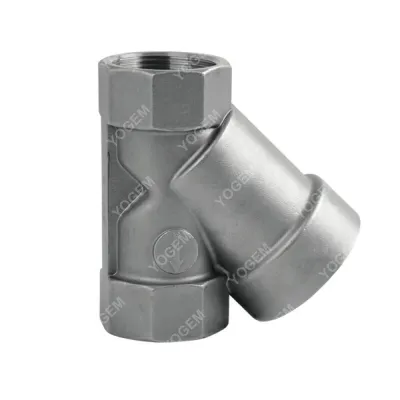Have you ever wondered what goes into making stainless steel? It's a common material used in many products we use every day, from kitchen appliances to construction materials. In this article, we'll explore what is used to manufacture stainless steel and the process behind it.
Stainless steel is made primarily from iron ore, nickel, chromium, and carbon. These raw materials are melted together in a furnace at extremely high temperatures to create a molten metal mixture known as stainless steel alloy. Other elements, such as molybdenum, manganese, and nitrogen, can also be added to improve the properties of the stainless steel.

The molten metal mixture is poured into a mold to cool and solidify. This process is called casting and produces what is known as raw stainless steel. The raw stainless steel is then subjected to various processes to remove impurities and refine its properties. This can include heat treatment, descaling, and grinding to achieve the desired shape and finish.
Once the raw stainless steel has been refined, it is ready to be formed and shaped into the final product. This can be done through various methods such as rolling, forging, or extrusion. Each method has its unique advantages and is chosen based on the specific requirements of the product.
After the stainless steel has been formed and shaped, it goes through a finishing process to give it the desired surface finish. This can include polishing, buffing, or coating the stainless steel to protect it from corrosion and improve its appearance. Some products may also undergo additional treatments such as passivation or electropolishing to enhance their properties further.
Throughout the manufacturing process, quality control is essential to ensure that the stainless steel meets the required standards. This can include various tests such as mechanical, chemical, and visual inspections to verify the material's properties and quality. Any defects or imperfections are detected and corrected to ensure that the final product meets the customer's expectations.
Once the stainless steel products have passed all quality control checks, they are packaged and shipped to their destination. This can involve wrapping, boxing, or crating the products to protect them during transportation. Stainless steel can be heavy and fragile, so proper packaging is essential to prevent any damage during shipping.
In conclusion, stainless steel is a versatile material that is used in a wide range of applications due to its durability, corrosion resistance, and aesthetic appeal. The manufacturing process involves melting raw materials, refining the alloy, forming and shaping the stainless steel, finishing and polishing, quality control, and packaging and shipping. Each step is crucial to producing high-quality stainless steel products that meet the customer's needs.
If you are looking for Stainless Steel Precision Casting, aluminum casting, or Ductile Iron Casting services, contact Stainless Steel Precision Casting, Aluminum Casting Supplier, Ductile Iron Casting for more information. Their expertise and experience in manufacturing high-quality stainless steel products make them a reliable supplier for all your stainless steel needs.
We adhere to the development policy of "high quality, high efficiency, integrity and down-to-earth" to provide you with high-quality processing services of OEM grey iron sand casting parts supplier,ductile iron sand casting for sale,Gray Cast Iron,ductile iron casting suppliers
Previous: Why are aluminum-silicon alloys popular for casting operations?
Next: Water Retaining Gate for Water Conservancy Construction: Ensuring Efficient Water Management
Copyright:@2020-2021
Comments Please sign in or sign up to post.
0
0 of 500 characters used